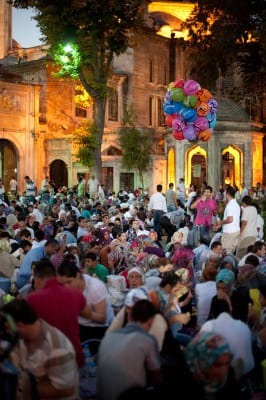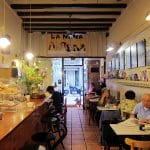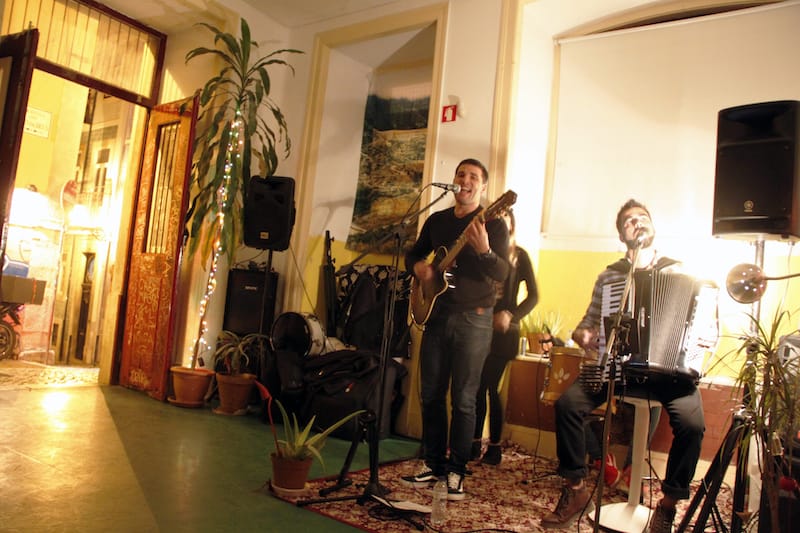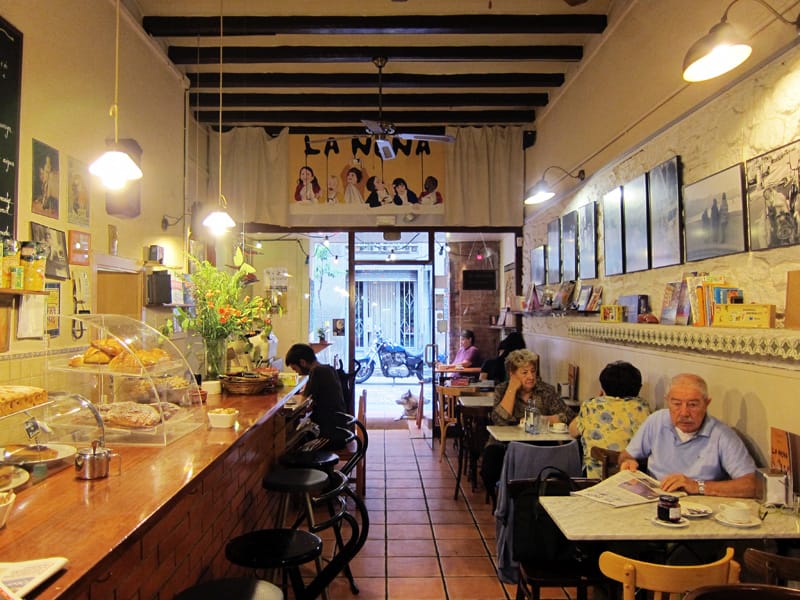Think of Ramadan, which just began in many parts of the world, as a kind of monthlong biathlon that consists of an all-day race to beat back the hunger and thirst of fasting, followed by an all-night marathon of eating and drinking in order to fortify the body for the next day’s fast.In recent years in Turkey, iftar, the traditional break fast meal that used to mostly consist of some dates and a freshly baked round of Ramadan pide, has started to become an increasingly trendy affair, with ministers, businessmen and regular people trying to make an impression by hosting ever more lavish meals.
Still, even if you’re not fasting, a traditional iftar meal at the right place remains a unique and tasty window onto life during the Ramadan period. Below is a list of our favorite spots for iftar in Istanbul (note: reservations are recommended):
One of our latest favorites is Osmanbey’s Mahir Lokantası, which serves an array of regional dishes from all over Turkey that are cooked with an impressive level of precision and a palpable portion of love. Their ifta menu is a serious affair, featuring their wonderful mumbar dolması (stuffed intestines) içli köfte (ground beef-filled bulgur pockets, similar to kibbeh) a choice of kaburga dolması (rice-filled lamb ribs) or a mixed grill plate. This is in addition to soup, salad, fruit, dessert, and other Ramadan-accoutrements. Even if you aren’t fasting, you may want to think about doing so before stepping up to this iftar.
Siirt Şeref Büryan Kebap Salonu feeds 450 customers every night during Ramadan, the month-long period of daily fasting which ends on Tuesday. Their famed büryan lamb kebab cooks for two hours on hooks lowered into a sealed pit, with only salt to draw out the flavors. Bones are removed from the meat and cooked separately to impart flavor to the meat. The result is succulent, and it is served on a round of lavaş; lamb on toast, Siirt-style. Perde pilav, a traditional wedding dish of chicken in a rice crust cooked in a tin pot, is also served, as well as a flat, Siirt version of içli köfte (cooked ground meat stuffed inside a bulgur shell). The owners, brothers Beşir and Levent, have another branch in Siirt and have served Martha Stewart, among others, their büryan.
Another classic Ramadan experience is heading to Aksaray’s Ciğeristan (literally, Land of Liver). This popular grillhouse lines the sidewalks with extra tables and chairs during the holy month, and it is liable to get packed, so reservations may be necessary. Expect succulent skewers of perfectly cooked liver and a selection of equally-excellent kebabs, such as the tavuk şiş. If you show up to a full house, do not despair, for you are in Aksaray, a true culinary paradise with many worthy alternatives nearby. We’d recommend traipsing up the street and trying your luck at the excellent grillhouse Babo’nun Yeri, or Has Kral, with its tantalizing selection of Hatay-inspired meze and truly surreal setting.
 Although no excuse is needed to visit the well-known Çiya – one of our favorite restaurants in Istanbul – during Ramadan they are serving up a special iftar menu which, like the restaurant’s regular menu, will likely change daily and feature lesser-known regional specialties from around Turkey. Highly recommended.
Although no excuse is needed to visit the well-known Çiya – one of our favorite restaurants in Istanbul – during Ramadan they are serving up a special iftar menu which, like the restaurant’s regular menu, will likely change daily and feature lesser-known regional specialties from around Turkey. Highly recommended.
Located in the Asian side’s Üsküdar neighborhood, Kanaat, is an esnaf lokantası (tradesmen’s cafeteria) that has grown into something bigger and classier, with an almost overwhelming selection of very nicely made prepared dishes served from what seems like a mile-long steam table.
Unlike Kanaat, Şahin Lokantası has remained a humble, yet bustling, esnaf lokantası, with two small floors and a smaller menu of classic dishes prepared with a lot of love. It’s another one of our favorite places in town.
This was originally published July 9, 2014, and has been updated.
 April 17, 2013 Las Laguneras
April 17, 2013 Las Laguneras
Update: This spot is sadly no longer open.
Come Sunday, we often find ourselves […] Posted in Mexico City February 8, 2018 Post-Colonial Lisbon: Brazil Edition
February 8, 2018 Post-Colonial Lisbon: Brazil Edition
Lisbon’s communities from Portugal’s former colonies provide the strongest link to the […] Posted in Lisbon October 24, 2012 La Nena
October 24, 2012 La Nena
The large banner in La Nena chocolatería proclaiming “No Hay Alcohol” (strung up between […] Posted in Barcelona
Published on June 08, 2017
Related stories
April 17, 2013
Mexico City | By Ben Herrera
Mexico CityUpdate: This spot is sadly no longer open. Come Sunday, we often find ourselves strolling through leafy Parque Sullivan, which hosts Mexico City’s largest outdoor art market. The art here ranges from modern to whimsical, abstract to landscapes, created by artists who no doubt have dreams of being the next Diego Rivera or Frida Kahlo.…
February 8, 2018
LisbonLisbon’s communities from Portugal’s former colonies provide the strongest link to the country’s past, when it was the hub of a trading empire that connected Macau in the east to Rio de Janeiro in the west. Though integral elements of Lisbon life, these communities can sometimes be an invisible presence in their adopted land, pushed…
October 24, 2012
Barcelona | By Johanna Bailey
BarcelonaThe large banner in La Nena chocolatería proclaiming “No Hay Alcohol” (strung up between a rocking horse and a wooden toy kitchen) makes it fairly clear that this is not a place for sophisticated conversation and cocktails. That doesn’t mean that La Nena (which means “The Girl” in Catalan) doesn’t cater to any other vices.…

















































































